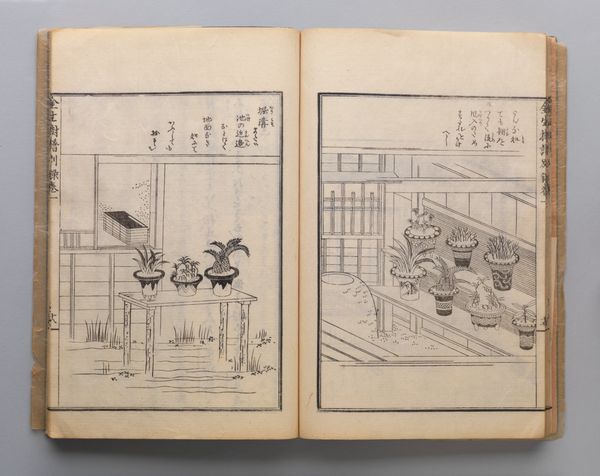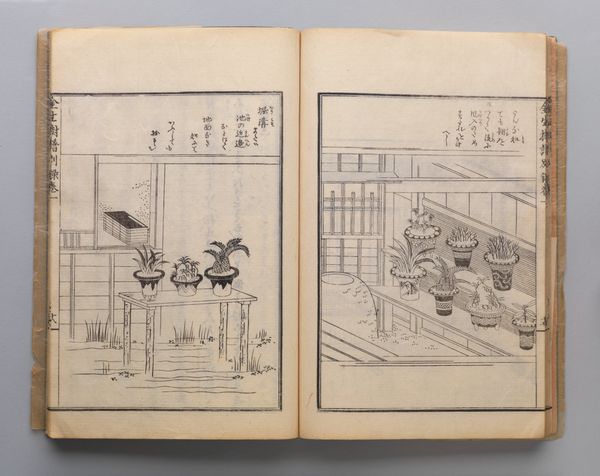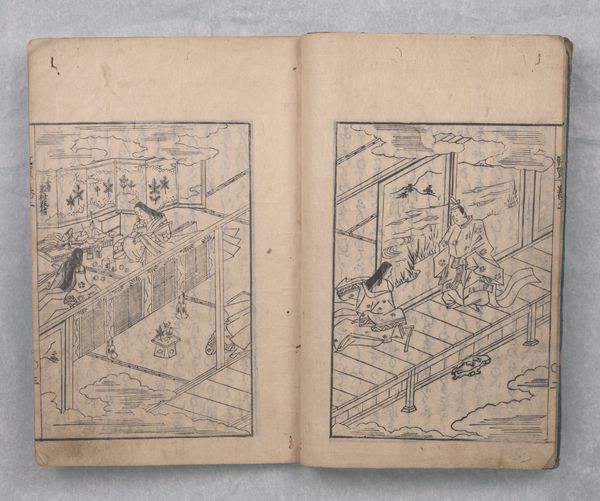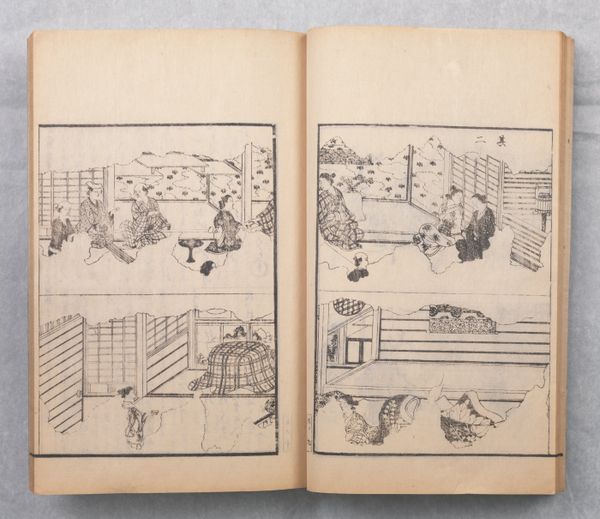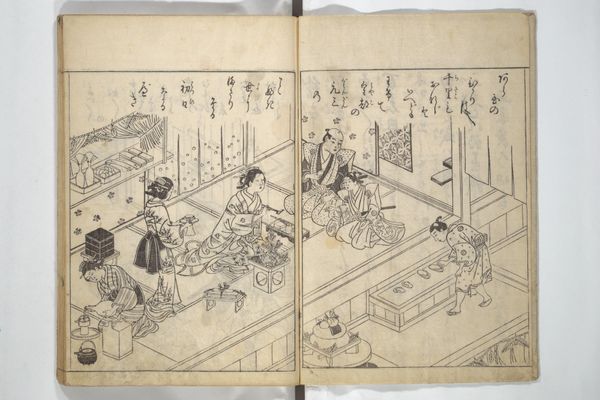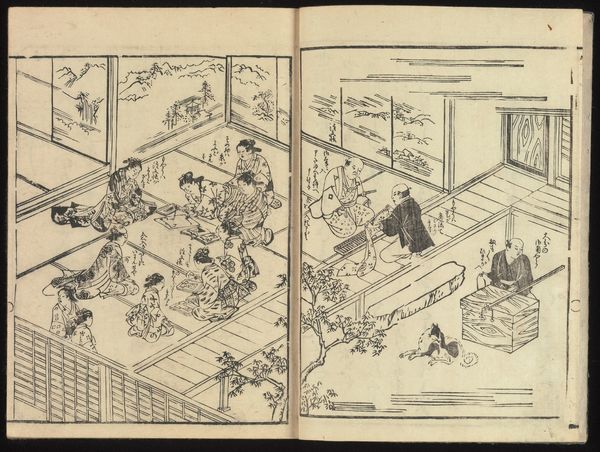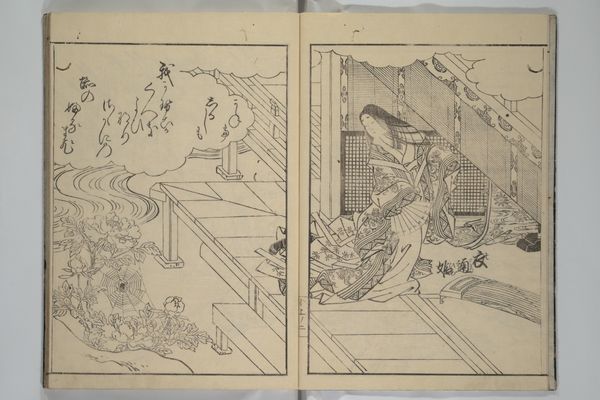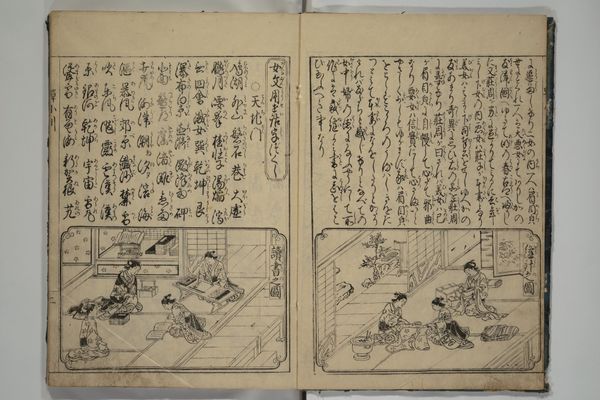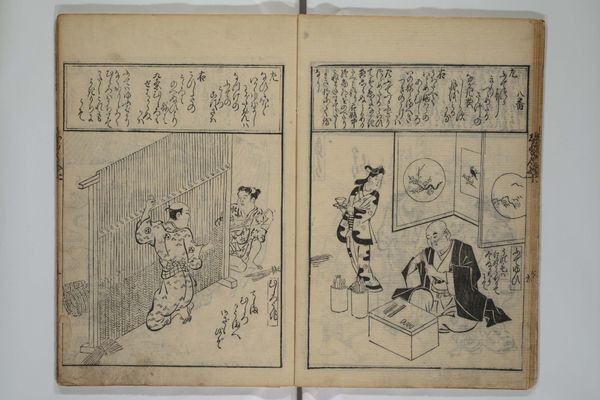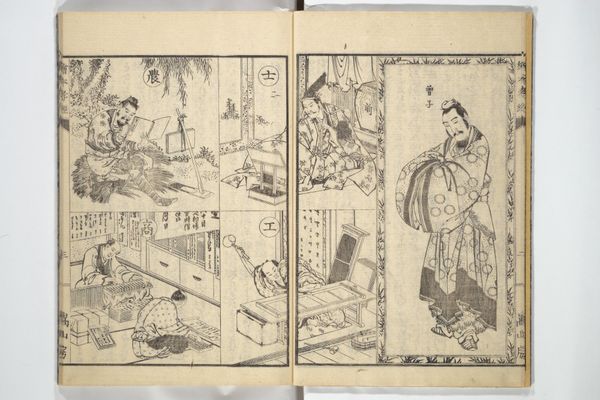
Manual on Arboriculture (Kinsei jufu 金生樹譜) Possibly 1833 - 1836
0:00
0:00
drawing, print, paper, ink
#
drawing
# print
#
asian-art
#
ukiyo-e
#
paper
#
ink
#
geometric
#
line
Dimensions: 8 13/16 × 6 1/8 × 1/4 in. (22.38 × 15.56 × 0.64 cm)
Copyright: Public Domain
Editor: So, this is *Manual on Arboriculture* by Chōseisha Aruji, probably from 1833 to 1836. It's ink on paper, a Japanese woodblock print, with illustrations of what look like bonsai arrangements. The simple line work is really appealing. What do you make of the material choices in creating a manual like this? Curator: I’m interested in how this *ukiyo-e* print democratizes knowledge. Traditionally, this level of horticultural expertise might have been confined to aristocratic circles. But the printing process—the very act of carving woodblocks and pressing them onto paper—signals a shift towards wider access to knowledge, almost an artisanal production of learning. Notice the geometric patterns of the built environment contrasting with the organic shapes of the plants. Does this geometric structure speak to the labour involved in controlling nature, shaping it for domestic use and sale? Editor: That’s a good point about democratization. So the print medium makes this accessible. Would a painted scroll have been far less so, pricewise and audience-wise? Curator: Exactly. Scrolls are unique objects, and their production involves specific materials for one particular owner, reflecting a hierarchical consumption. This book speaks to something more broad based. How might its materiality shape its circulation and use? Think of the paper quality, ink, binding and size... Editor: It looks like relatively inexpensive paper. Maybe it suggests a practical, everyday use - something you might take out to the garden with you. The focus is on the practical over the precious, the access over exclusiveness. Curator: Precisely. It’s a material artifact tied to the circulation of knowledge. The means of production define its purpose. The artist clearly prioritizes function over embellishment, labor over rarity. What more could the *process* reveal? Editor: That completely changed my initial reading. I hadn’t considered how the printing *itself* could be a statement about accessibility. Thanks!
Comments
No comments
Be the first to comment and join the conversation on the ultimate creative platform.
